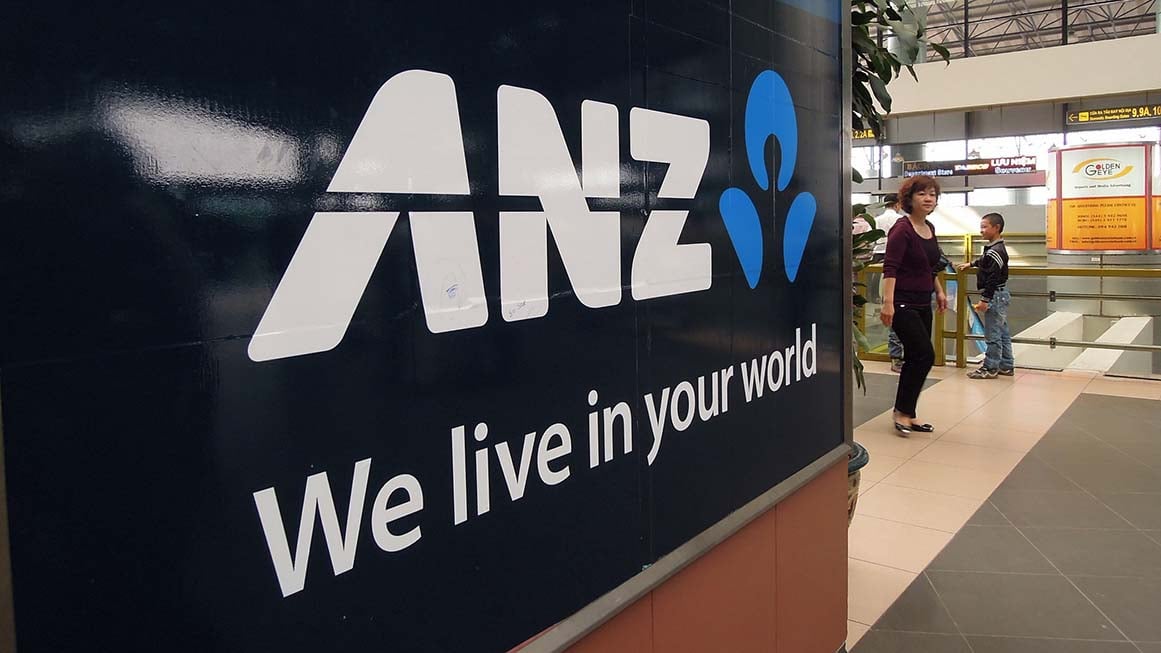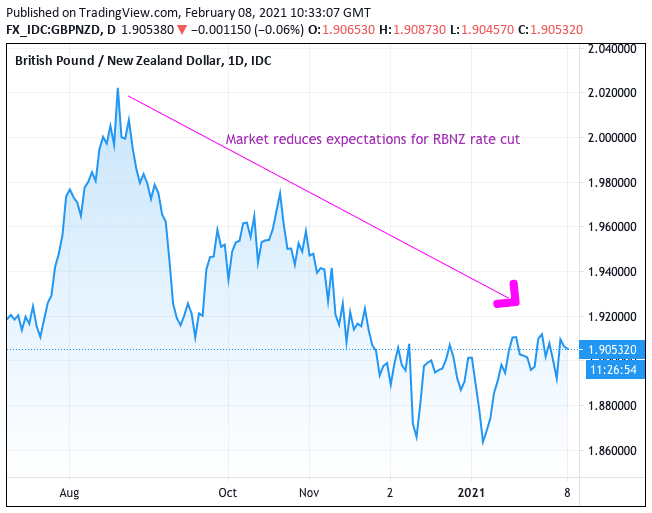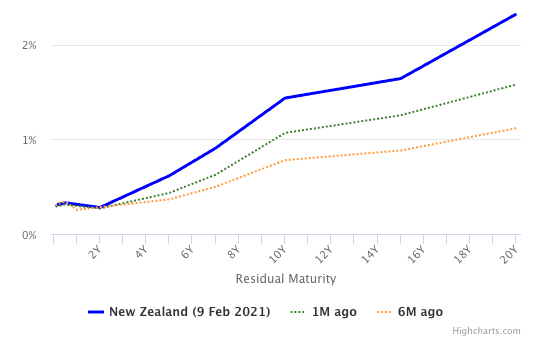New Zealand Dollar: ANZ No Longer See a RBNZ Rate Cut

Image © David McKelvey, reproduced under CC licensing
ANZ no longer expect the RBNZ to cut interest rates, a view that underpins the New Zealand Dollar's multi-month trend of appreciation.
The New Zealand Dollar had a stellar second half in 2020, recovering strongly against the Pound, Euro, U.S. Dollar and a host of currencies following a turbulent first half to the year that was characterised by a covid-induced sell-off.
A recovery in global investor sentiment and rising equity and commodity markets all played a role in helping the Kiwi Dollar - which is considered a pro-growth currency - recover.
But perhaps the biggest driver of the currency's outperformance was the rapid decline in expectations for the Reserve Bank of New Zealand (RBNZ) to cut interest rates into negative territory, a move being mooted by the central bank in order to support the economy.
Above: GBP/NZD has trended lower as markets erased expectations for another RBNZ rate cut.
But as it became clear that New Zealand's economy was in a better-than-expected position, thanks to strong lockdown measures and border controls, it also became clear that further support from the central bank was no longer necessary.
The New Zealand Dollar recovered in tandem.
Cementing the view that this downside risk to the New Zealand Dollar is fading, one of the region's main lenders say they no longer expect the RBNZ to cut interest rates, citing a host of robust economic measures for the about-turn.
"We no longer expect the RBNZ to cut the OCR again this cycle, with the economy more resilient than previously believed. This view reflects a range of factors, but especially a better starting point for the labour market," says Sharon Zollner, Economist at ANZ.
- Pound-to-New Zealand Dollar spot rate at publication: 1.9025
- Bank transfer rates (indicative guide): 1.8359-1.8492
- FX transfer specialist rates (indicative guide): 1.8434-1.8890
- More information on securing specialist NZD rates, here
The call by ANZ comes after New Zealand's unemployment rate unexpectedly fell in the final quarter of 2020 to 4.9%, and broader indicators of labour market underutilisation likewise improved.
Zollner notes measures of employment, hours and earnings point to continued economic momentum into the fourth quarter, after the third quarter's solid lift.
"Although some industries are struggling, policy support has seen other industries fill the gap so far," says Zollner. "Businesses are in good stead on the back of recent strong activity, despite cost pressures, and are increasingly keen to employ and invest."
The economist also notes inflation has also been stronger than the RBNZ had expected and the outlook is better, with less spare capacity in the economy than previously thought.
Commodity prices are meanwhile observed to have continued to rise and New Zealand’s export demand remains supported, despite the challenging global backdrop.
"Recent developments take further monetary stimulus off the table, provided downside risks do not materialise, with the outlook for inflation and the labour market looking even more assured," says Zollner.
{wbamp-hide start} {wbamp-hide end}{wbamp-show start}{wbamp-show end}
"The RBNZ will want a high degree of certainty about sustainably reaching its goals, which speaks to policy being on hold for a long while," she adds, "for now, the RBNZ has done enough."
For those watching the New Zealand Dollar, the question now becomes to what extent the erasing of the negative rates story has already taken place. Indeed, some analysts we follow say the New Zealand Dollar's boost from this story has likely already run its course.
But we reported at the start of this week that the RBNZ might not be happy with the market's decision to wipe out negative interest rate expectations, after all this means money markets will have raised the cost of borrowing.
Indeed, the value of the yield paid on New Zealand government bonds has recovered from where it was six months ago, when markets were at their most alert to a negative interest rate future.
Above: New Zealand government bond yields have risen over the past 6 months, image courtesy of WorldGovernmentBonds.com.
The RBNZ will therefore likely have looked at rising bond yields and the rising New Zealand Dollar and ascertained that market forces are now actively working against their own efforts to support the economy, meaning the February 24 meeting could see them push back.
There is therefore a risk that the central bank stifles the New Zealand Dollar's recent advance.
Foreign exchange analysts at Barclays say the New Zealand Dollar could weaken over the next two weeks as investors adopt a cautious stance ahead of the RBNZ policy meeting.
Any weakness in the broad New Zealand Dollar could in turn help the Pound to resume the short-term trend of recovery that snapped a medium-term losing streak at the start of 2021.
"We think the NZD is likely to weaken in the run-up to its MPC meeting on 24 February," says Ashish Agrawal at Barclays. "The NZD has likely overshot after it rallied 5% since the November MPC on improving domestic data and higher rates in New Zealand."






